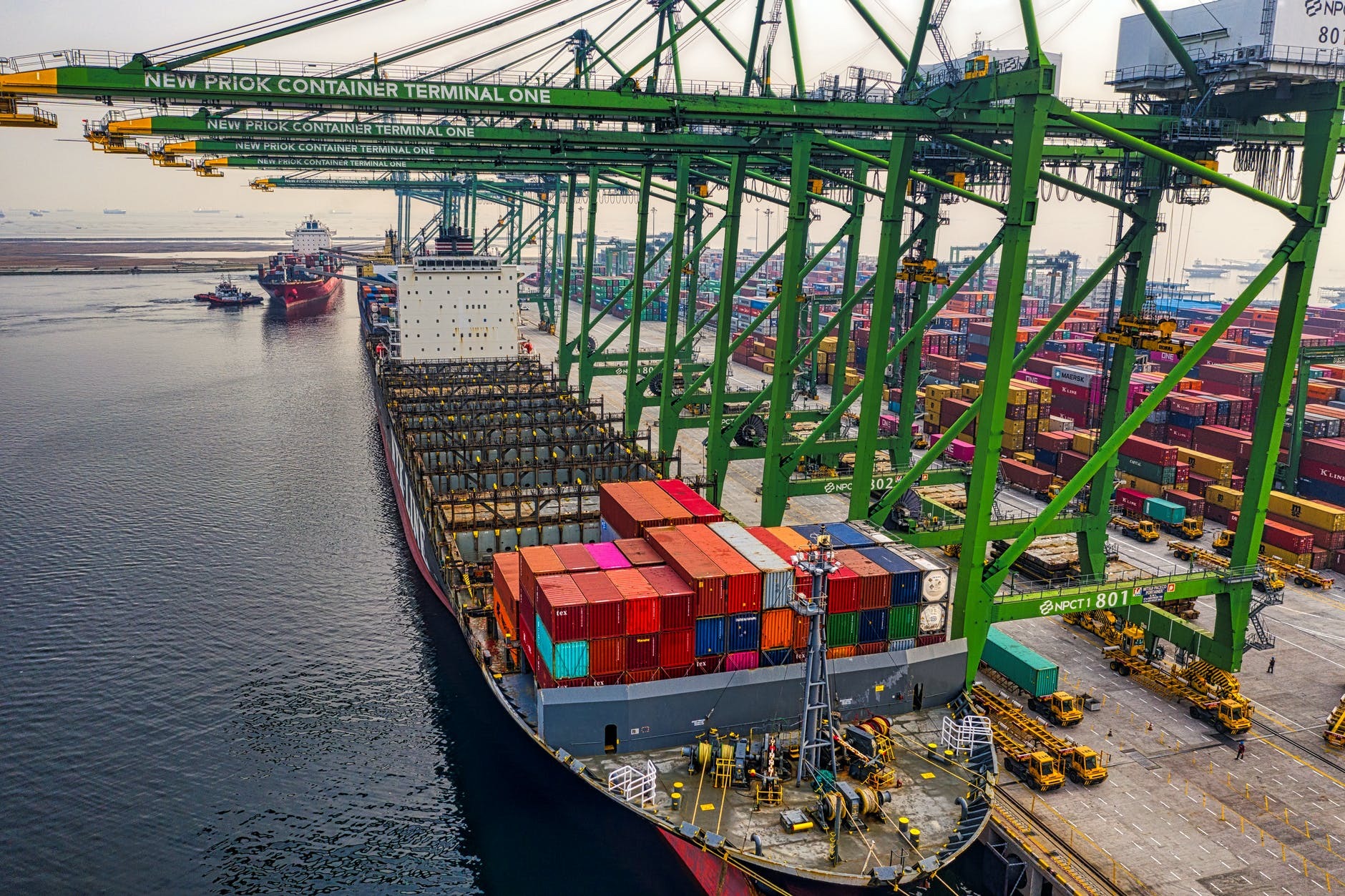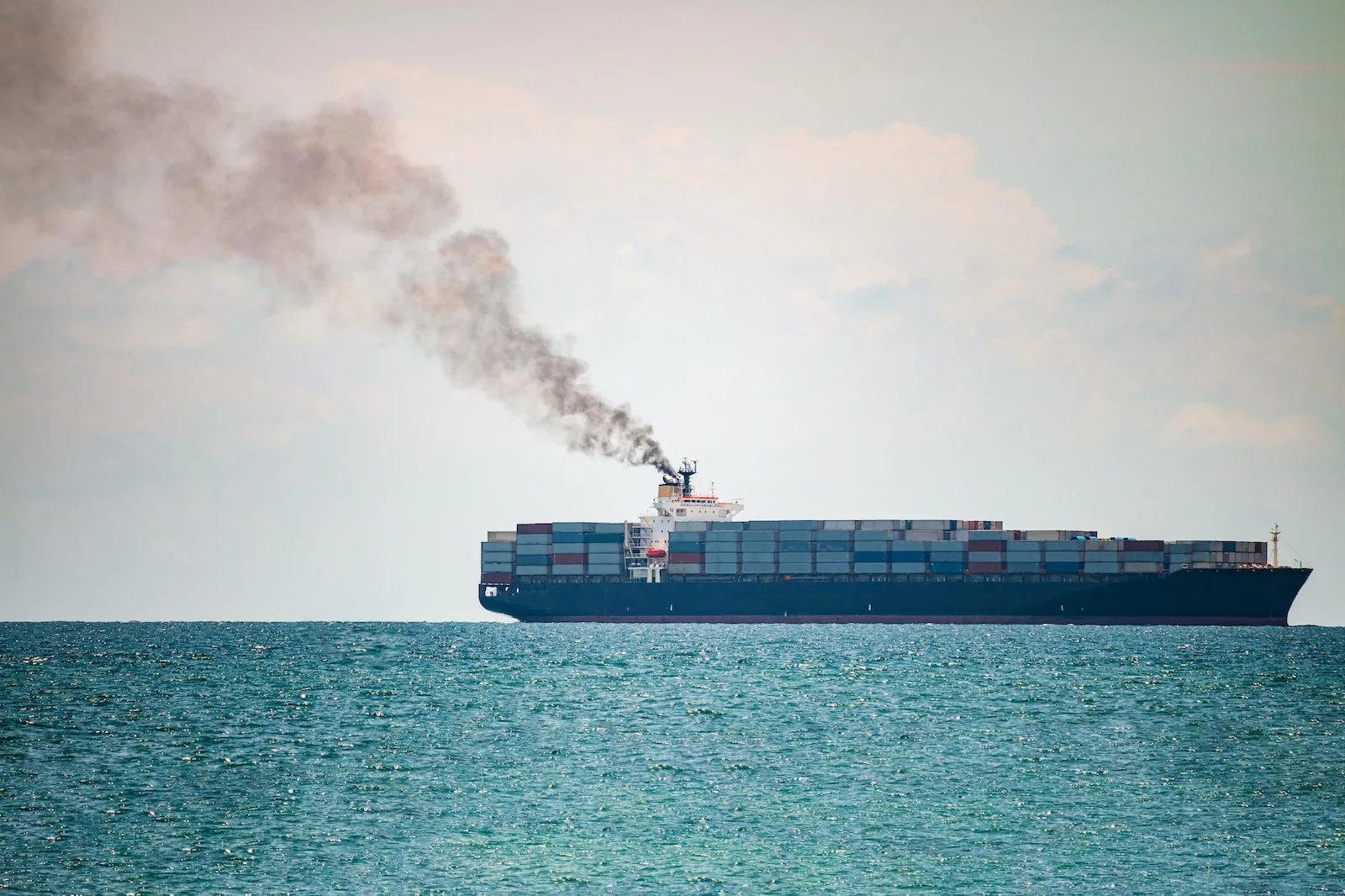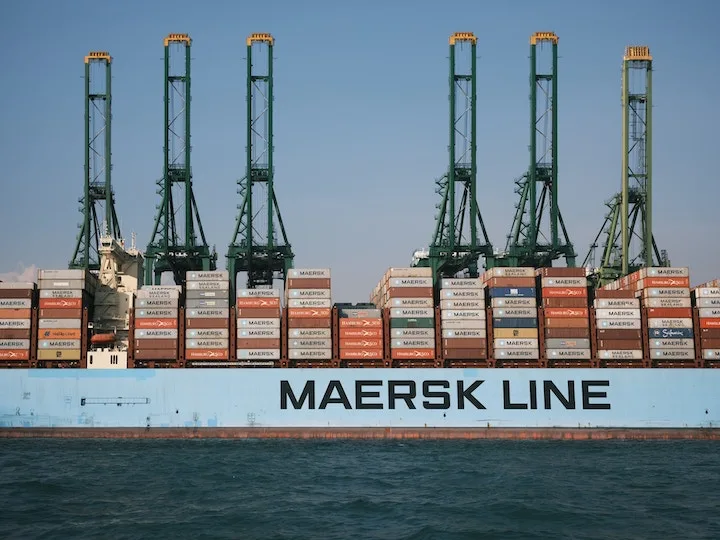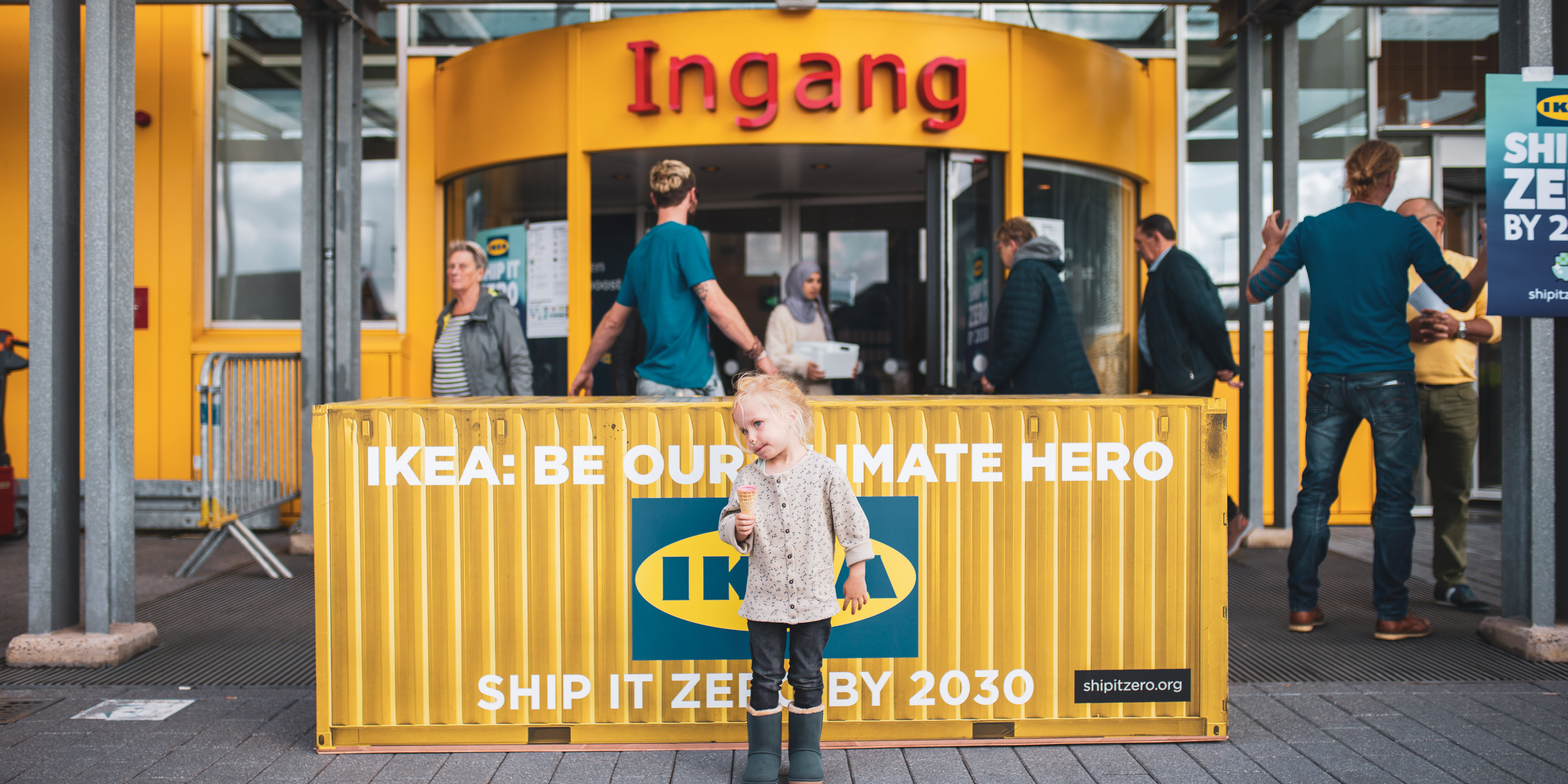


Report exposes massive pollution impacts on U.S. ports, coastal communities from maritime shipping practices of Walmart, Target, Amazon, IKEA, showcasing need for retailers to lead shipping industry toward zero-emissions vessels
LOS ANGELES — New research released today by Ship It Zero coalition members Stand.earth and Pacific Environment takes an in-depth look at four major retail companies that import goods into the United States — Walmart, Target, Amazon, and IKEA — and maps their often-hidden relationships with the fossil-fueled cargo carriers they hire to transport their goods. The groundbreaking analysis, titled Shady Routes: How Big Retail and their Carriers Pollute along Key Ocean Shipping Corridors, was released on Cyber Monday, in a year that promises to mark a shift to e-commerce shopping unlike anything the world has ever seen.
- Read the report: https://bit.ly/ShadyRoutesReport2
Amid an ongoing global shipping crisis spurred by increased consumer demand fueled by the COVID-19 pandemic, retail brands and cargo carriers have reported record-breaking profits. These new findings reveal close relationships between major retailers and the cargo carriers transporting consumer goods, and how that partnership showcases possibilities for both sectors to address the growing demand for zero-emissions cargo shipping. The report shows the routes favored by the four companies, the emissions impacts of those routes, and how the ongoing cargo shipping backlog has saddled U.S. port communities with increasing rates of pollution.
Among the thousands of retailers moving goods into the U.S. via cargo ships, the retail companies in the report are some of the top importers, comprising 7% of the total estimated U.S. imports in 2020, with Walmart and Target in first and second place, respectively. The goods imported to the U.S. between 2018-2020 by these four companies alone accounted for an estimated 20 million metric tons of carbon dioxide equivalent emissions (CO2e), as much as the annual emissions from five coal-fired power plants.
“Pandemic-fueled demand increases, record-breaking profits, and the supply chain crisis reveal the current maritime shipping system is ripe for transformation. There is ample room for retail brands and cargo carriers to absorb the cost of transitioning to fossil-free, zero-emissions shipping and deliver healthier air to our port communities and a livable climate future. Retail companies can choose to be industry leaders and early adopters of zero-emissions technology, or they can put short-term profit over public health and the climate by making empty commitments that put off action on climate change until it’s too late,” said Kendra Ulrich, Shipping Campaigns Director at Stand.earth.
WEST COAST SHIPPING ROUTES HAVE OUTSIZED POLLUTION BURDEN
The report reveals the Transpacific routes between China and the ports of Los Angeles, Long Beach, San Diego, Seattle, and Tacoma were the largest share of the combined carbon emissions of the four companies, accounting for an estimated 21% of emissions between 2018-2020. The use of these Transpacific routes presents particular problems for West Coast port communities saddled with increasing rates of pollution, thanks to the constant presence of ships idling nearby. This is especially true in Seattle and Tacoma in Washington state, where imports were up over 40% in 2020 versus 2019, fueled by the backlog at California ports.
“Target and Amazon have played an outsized role in the current congestion and pollution crisis at the ports of Los Angeles and Long Beach. As Target faces a swell of demand in places like California and a doubling of its digital sales, and as Amazon increases its control over its own gas-guzzling shipment and parcel delivery, it is past time to hold these retailers accountable for their responsibilities at the ports. Both companies will continue to favor West Coast routes, which means they’ll also keep clogging West Coast ports, spewing cancer-causing emissions and threatening our climate future,” said Dawny’all Heydari, Ship It Zero Campaign Lead at Pacific Environment.
In contrast, the research found IKEA is increasingly transporting goods from China to Europe via rail routes, then on cargo ships from Europe to East or Gulf Coast ports, as part of a strategy to reduce the company’s carbon emissions from its shipping.
CARGO CARRIER RELATIONSHIPS REVEALED
The report reveals strong relationships between Walmart, Target, Amazon, and IKEA and the world’s 15 largest cargo carriers — including CMA CGM, Maersk, MSC, Evergreen, Cosco, Yang Ming, Hapag-Lloyd, and Amazon’s non-vessel operating common carrier, AMZD — and how that partnership showcases possibilities for both sectors to address the growing demand for zero-emissions cargo shipping. The top 15 carriers account for 97% of the total emissions in the report, indicating these four retail giants rely almost exclusively on the same cargo carriers.
Maersk, Hapag-Lloyd, and CMA CGM reported over $3 billion USD in profits in the first half of 2021, an estimated 2500 percent increase over the first half of 2020. Walmart, Target, and IKEA are also spending money on chartered shipping, a costly and unusual move that reveals a willingness to spend more to get products to market.
“Major cargo carriers are lagging in moving towards zero emissions, citing that costs have been prohibitive. Container industry profits are unprecedentedly strong, consumers support clean shipping, and the technology is available. There are no longer any excuses left to set goals to meet zero emissions for 2030. Retail companies looking to achieve climate goals must engage with cargo carriers that will give them zero-emission freight options to get their goods to market,” said Madeline Rose, Climate Campaign Director at Pacific Environment.
Walmart, the number one importer of goods in the U.S., topped the report with the highest volumes traded and the most emissions. The study also reveals Walmart relies heavily on one ocean carrier, CMA CGM, the biggest polluter among all carriers in the report. CMA CGM accounted for more than two thirds of Walmart’s ocean shipping emissions in 2020 and one third of the ocean shipping emissions across all four companies — as much as the next four carriers combined.
Major cargo carriers are increasingly aligning their operations with the demands of retail customers, by providing more end-to-end distribution services as consumer demand shifts to e-commerce and consumers require more warehousing and last mile services rather than brick and mortar stores. CMA CGM and Hapag-Lloyd recently stated their capacity priority is for long-term customers, including clients like Walmart looking for integrated supply chain solutions. By chartering its own private carrier, Amazon is also exerting unique control over its supply chain and appears to be consolidating control rapidly.
“Major retail companies and cargo carriers are flush with cash from pandemic-driven record breaking profits and are tightening their already close relationships. This is an unprecedented opportunity for retail brands and cargo carriers to work together to immediately reduce their maritime emissions from their existing container fleet and build zero-emissions shipping into their growth model,” said Ulrich.
SHIPPING INDUSTRY’S POLLUTION PROBLEM
The global shipping industry accounts for 3% of global climate emissions, more than global air travel. If shipping were a country, it would be the world’s sixth largest climate polluter. But since maritime shipping negotiated itself out of the U.N. Paris Agreement, the effort to reduce emissions in the industry has been slower than in other sectors.
Approximately 90% of the world trade is transported by sea, and current business-as-usual scenarios project emissions will grow up to 50% over 2018 levels. While the International Maritime Organization noted increased ship size and operational improvements aimed at creating better fuel efficiency have resulted in a decrease in emissions intensity, annual absolute emissions are still increasing.
But the message is starting to sink in, and new commitments from retailers and governments are putting pressure on the industry. At COP26, Amazon joined the First Movers Coalition to help commercialize emerging technologies to decarbonize heavy industries including ocean shipping, and committed to moving 10% of its freight on zero-emissions ships by 2030. Also at COP26, governments and CEOs launched the Clydebank Declaration to establish green shipping corridors among some of the busiest maritime shipping routes. And in October, Amazon and IKEA helped launch coZEV, a retailer-led initiative to move 100% of products off of fossil-fueled maritime cargo ships by 2040.
“Until recently, the massive climate and health-harming emissions from the cargo shipping industry have sailed under the radar. But consumers, corporations, and governments are waking up to the massive climate impact stemming from goods being shipped across our oceans. Reducing, and ultimately eliminating, maritime emissions will not happen without bold commitments and concrete actions from the companies paying for cargo carriers to transport their goods. The retail brands that fill our homes and lives with their products bear a direct responsibility for the pollution their supply chains create, and for taking the necessary actions to demand a transition to zero-emissions shipping this decade,” said Ulrich.
SHIP IT ZERO COALITION
The Ship It Zero coalition is calling on retail companies to address their cargo shipping pollution impacts in the following ways:
- Walmart and Target must take responsibility for their maritime pollution and commit to zero-emission shipping by taking immediate actions to reduce their maritime shipping emissions, abandon dirty ships, and commit to transition to 100% zero-emissions ocean shipping by 2030. Thus far, Walmart and Target have been silent on the topic of their ocean shipping emissions.
- Amazon and IKEA must make stronger commitments to zero-emission shipping and take immediate steps to reduce their maritime emissions. While Amazon and IKEA have made initial commitments to decarbonize a small portion of their ocean shipping this decade and achieve zero-emission ocean shipping by 2040, with Amazon committing 10% of its freight on zero-emissions vessels by 2030, these commitments do not correspond with the urgency of port community health and the climate crisis. Amazon and IKEA must take steps now to reduce their current emissions and commit to 100% zero-emissions shipping this decade.
- Walmart, Target, Amazon, and IKEA must play leadership roles in creating fossil-free shipping corridors across the Pacific, starting with Yantian (Shenzhen) to Los Angeles and Long Beach and Shanghai to Seattle. Policymakers and ports must join them.

Recent Updates





